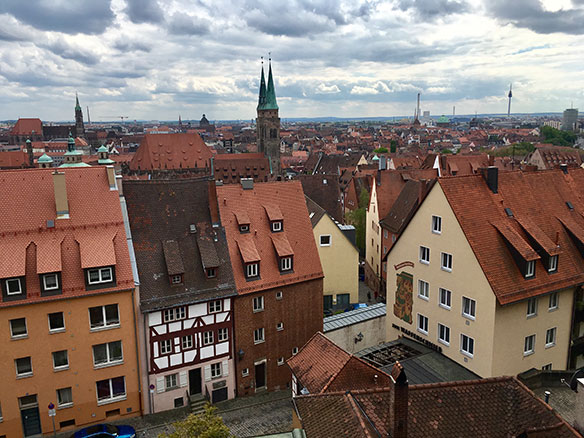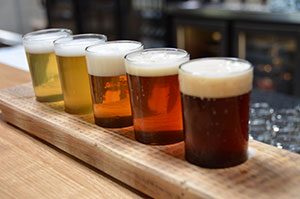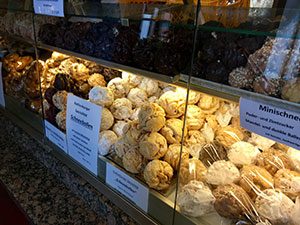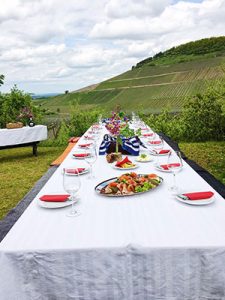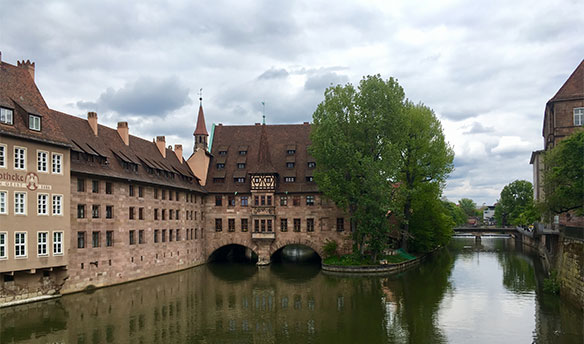
Savouring Bavaria
One bite (or sip) at a time
ANN RUPPENSTEIN
The mayor of Nuremberg, Ulrich Maly, said it best – between hearty doses of sausages and pieces of roasted pork, wine, beer and “potato dumplings sized like children’s heads,” residents of the Bavarian city certainly know how to enjoy life to the fullest.
“We have a medical statistic that tells us that we in Nuremberg are dying a little earlier than the rest of the Germans, but before, we are living much better,” he quipped.
As travellers continue to eat and drink their way through destinations as a means of getting an authentic taste for a country, the German National Tourist Board is set to launch Culinary Germany as its campaign theme for 2018.
While the European nation is often associated with being the land of beer (after all, it has a beer purity law dating back more than 500 years) and sausages (there’s certainly plenty of that, too) the local gastronomy extends far beyond suds and wurst. In fact, some may not know that Germany is among the top countries with the most Michelin-starred restaurants.
“Travellers nowadays would like to have authentic experiences: to live, breathe and to really indulge in a destination instead of rushing it,” Antje Splettstoesser, director of the German National Tourist Office, tells Travel Courier in an exclusive interview. “Slow down, learn some German words (Prost is a good one), sit in a café and watch locals, visit world class museums, or take the time to cycle through the English Garden and stop at one of the most beautiful beer gardens right on the lake.”
With direct lift from Canada to Munich, Frankfurt and Berlin currently underway, it’s never been more convenient for Canadians to take off to Germany.
“You can soak up the atmosphere and meet some locals, while enjoying your mass of beer,” she adds. “Maß, or mass in English, is another favourite word in German. Each mass has one – litre – or more than two pints of beer in one glass – German efficiency at its best!”
Although there are no shortage of places to visit across the country, here are a few delights that await clients in Bavaria, outside of the ever-popular city of Munich.
Going local: dig into regional specialties
Wherever travellers head in Germany, there’s local specialties to discover and devour. Take for example, Nuremberg, which is home to the Nuremberg sausage, hazelnut schnapps and a specialty bottom-fermented red beer (Rotbier).
With Christmas just around the corner (indeed, less than three months away), the second-largest city in Bavaria is also home to one of the most celebrated Christmas markets in the country, where one can indulge in the gingerbread-like Lebkuchen and Glühwein (mulled wine), to name but a few.
Not only does a visit to Rothenburg ob der Tauber feel like stepping back in time to a postcard-perfect medieval town, but the charming destination, part of the popular Romantic Road through southern Germany, is also home to traditional snowball (Schneeball) pastries, which visitors can learn how to make on-site.
In the area of Franconia, which boasts more breweries per square kilometre than any other area in Europe, the town of Aufsess holds the Guinness Book of Records for having the most breweries per number of residents. While beer is in abundance, so is wine. Dubbed the Land of Wine and Beauty, it’s the only wine region in the federal state of Bavaria. The area features impressive views of the surrounding vineyards, with the peaks of the Rhön Mountains in the background. There are also plenty of regional Franconian specialties to try, like Franconian bratwurst, gingerbread and an assortment of breads.
Meanwhile, in Bamberg, the specialty brew is a Rauchbier, which translates to a smoked beer, but some would describe as tasting like liquid ham. A large part of the town is a designated UNESCO World Heritage Site.
“Every region has their own unique specialties, which gives travellers the chance to really experience authentic and local Germany through their culinary taste buds,” Splettstoesser says.
www.germany.travel
Top tips for selling Germany
For travel agents looking to increase their bookings to Germany, Antje Splettstoesser, director of the German National Tourist Office, offers some selling tips to utilize:
Sell the experience over the geographic location – Travellers would like to hear who they can be and what they can learn on their trip. Didn’t you always want to feel the thrill of driving 200km per hour on a German autobahn? To become a graffiti artist on the streets of Berlin? Or try to carry four mass at the same time (not even talking about drinking them) and become a professional pretzel or gingerbread baker?
Sell the secrets – Everyone loves going to places where their fellow travellers, friends or neighbours haven’t been yet. What is better than coming back from your trip to say that instead of the hip and well-travelled city of Berlin, you have explored the underdog city of Leipzig, which is, among Europeans, already known as the “second Berlin.” Or to end up overnighting at castles that are only known to locals? Send your clients to the trends of tomorrow!
Sell seasonality – Germans love to celebrate, and for every season we have thousands of festivals (not exaggerating) and events. Everyone travels in summer, but what about the beautiful time of November/December when thousands of Christmas markets light up, and you can smell almonds and mulled wine, while buying true original Christmas ornaments from the Or mountains? Or what about spring in Germany? While in Canada, we are still freezing; in Germany, flowers are already blooming, temperatures are mild, and cafés and restaurants offer outdoor seating. The off-seasons are usually also more affordable and less busy.
Sell to the pallet – Most people will know Germany for the very traditional cuisine of sausages, pork knuckles, sausages and surprise: pork knuckles. Well, they miss out! Germany has the most Michelin-starred restaurants after France, and is spoiling the traveller’s pallet in a unique and very affordable way. A four-course menu at a one-starred Michelin restaurant is available for $80. Germany is also well known as wine country with more than 13 wine regions (yes, we are more than just beer).
Travel for less and get more – Germany is one of the well-affordable destinations in Europe. Berlin comes in at an average rate of $120 for a 4-star hotel a night. Eating out comes at a much lower rate than at home and of course nothing beats the price of 2 to 3 euro for a beer or a glass of wine. The value for money doesn’t stop at the attractions either. As a comparison to Canada, where you can easily spend $30 to $40 for one attraction, you can visit a lot of attractions for free or under $10 euro. Every client loves a good deal and to get more for their dollar.

